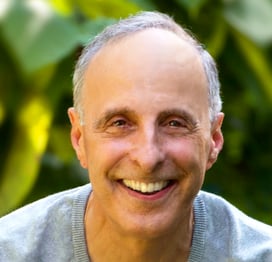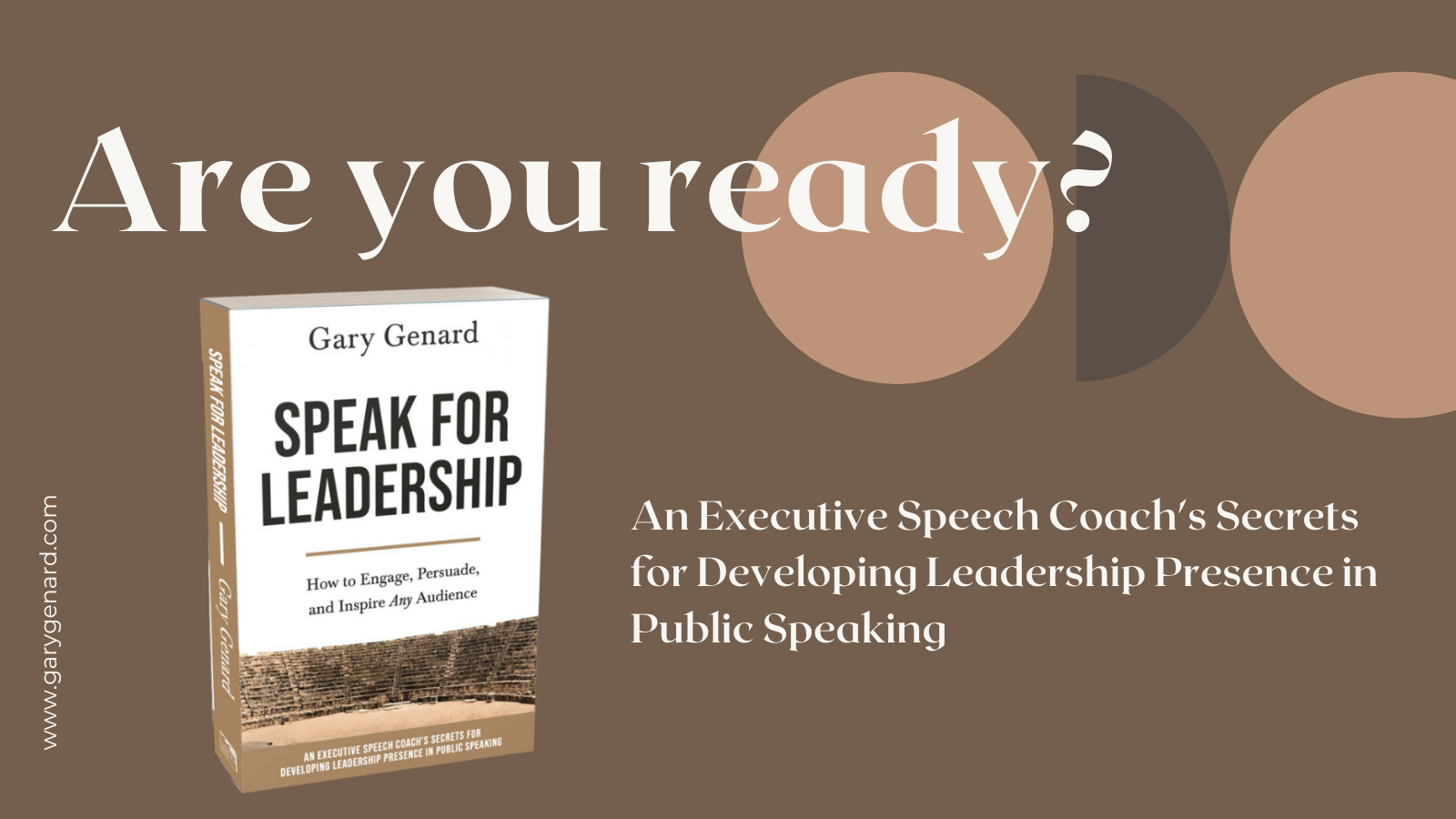Do you sound like yourself when speaking? And do you choose words tied to your purpose? Here's how to decide on the language to include in presentations.
How often do you think about the purpose of your speeches and presentations? The answer, of course, should be always.
Many speakers make a fundamental mistake, however. If asked "What's your purpose with this talk?" they respond by telling you their topic. "Well," they say, "I'm going to talk about . . . "
Knowing your purpose is the first step in speaking to lead! Discover the others in my book, Speak for Leadership: An Executive Speech Coach's Secrets. Find it here on Amazon.
But there's a vast difference between "talking about" anything, and knowing why you're speaking to this particular audience in the first place. In fact, until you're clear on that, you don't really know what to talk about! If responding to your listeners' needs is the reason you're speaking (and it always is), how can you do that until you recognize what those needs are?
Only when that's as clear as crystal to you, can you begin to gather the content on your talk. If you've been proceeding the other way—by starting to throw together content the minute you know you're going to be speaking—it's time to change your preparation strategy.
Even your initial thoughts about your audience and purpose isn't too early a stage to think about another vital matter: what language are you going to include in your talk? Answering that question will help you a) sound like yourself, and b) literally give your purpose a voice.
Performing like this means speaking as a leader. Discover performance-based speaking in my Free ebook, High-Impact Speaking: The Leader's Guide to Presenting With Influence.
Trying to Impress Anybody . . . Won't
Leonardo da Vinci said, "Simplicity is the ultimate sophistication." In public speaking, proceeding simply you isn't just the best way, it's the only way you'll succeed. Why? Because your audience is here to listen to you, and no one else. It's the reason you're the one giving the speech or presentation! If you try to, basically, sound better than you are, what's honest about that?
Part of connecting with listeners and influencing them positively, is showing them your true self. That's because it's the totality of who you are that is adding value to your talk. You have the responsibility—and the good fortune—to add to your material exponentially when you present. The real value in the public speaking situation lies in the speaker filtering the topic through their own unique knowledge, experience, and sensibilities. That's you!
And, of course, the minute you start trying to impress your audience is the minute you will cease doing so. "It ain't about you," is a mantra well worth learning and remembering. Think about it: if your focus is on looking good, you will be setting yourself up for failure in this presentation. Your goal is to impact listeners positively, isn't it? That objective becomes impossible if your performance is tuned toward glibness and "eloquence" instead of trying to give listeners what they need.
That concept extends to language, too. Part of being you is speaking as you, with the words and rhythms you feel comfortable with—always, of course, with the proviso that what you're doing works best with this audience. When a client tells me they want to be "eloquent," I do my best to teach them that eloquence means focusing on what listeners need to hear. What could be more eloquent than that?
Want more tips on audience-centered speaking for business? You'll find 101 easy-to-learn skills in The Public Speaking Handbook, How to Give a Speech. Find it here on Amazon.
Your Intention Decides the Language You Use
Now, let's circle back to the idea I introduced earlier, that your purpose determines what you're going to talk about. Actually, even your purpose depends upon an earlier step: that of understanding your audience.
You should always conduct some kind of audience analysis. That may be a deep dive into these stakeholders, especially if this group isn't one you're familiar with or that you haven't spoken in front of before. Or, if your listeners will be a group you're quite familiar with, e.g., your team, it may involve a more specific focus, such as "What is happening now that I need to discuss at this week's update?" And that should be followed by, "How can I get through to them on what they really need to hear?"
Speaking of focus . . . how good are you at it? Discover how to create presentations that command attention! Download my Free cheat sheet, "10 Ways to Stay Fully Focused."
Once you have a good idea of what these listeners are looking for from you, your purpose becomes much clearer. An important hint: be as specific as you can. In fact, at The Genard Method, we call it your "specific purpose." You should now be thinking of your intention in giving this talk, and I recommend the actor's method of shaping the character's purpose by using a strong infinitive verb.
In Shakespeare's Macbeth, the lead character's "I will not let anything stand in my way of gaining the crown," is infinitely more playable than, "I would sure like to be king." For you too as a speaker, your intention must be playable. "I'd sure like to get this prospect as a customer," pales next to this intention: "My purpose in this discussion is to get this prospect to agree to another meeting." Much more concrete and achievable as a result of your presentation, isn't it?
Now that you have an intention that's clear and playable, you can start to shape your talk in ways that will allow you to achieve the result you want. And an important part of that process is language, as you ask yourself: "What will work best for the ears of this audience? What terms and approaches will resonate with them . . . how can I live in their world as I'm speaking?"
If you know enough about this group to understand how they prefer to receive information, so much the better. It will help you get on their wavelength more reliably, quickly—and most important—to the liking of your audience.
You should follow me on Twitter here.

Gary Genard is an actor, author, and expert in public speaking and overcoming speaking fear. His company, The Genard Method offers live 1:1 Zoom executive coaching and corporate group training worldwide. In 2022 for the ninth consecutive year, Gary has been ranked by Global Gurus as One of the World’s Top 30 Communication Professionals. He is the author of the Amazon Best-Seller How to Give a Speech. His second book, Fearless Speaking, was named in 2019 as "One of the 100 Best Confidence Books of All Time." His handbook for presenting in videoconferences, Speaking Virtually offers strategies and tools for developing virtual presence in online meetings. His latest book is Speak for Leadership: An Executive Speech Coach's Secrets for Developing Leadership Presence. Contact Gary here.
Main photo credit: Pixabay.





